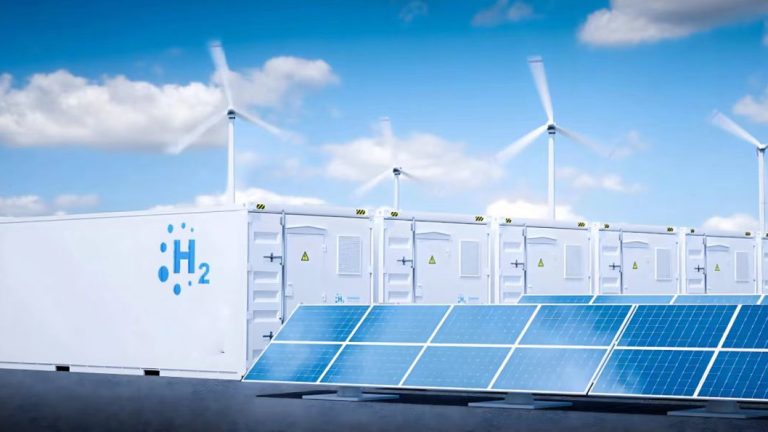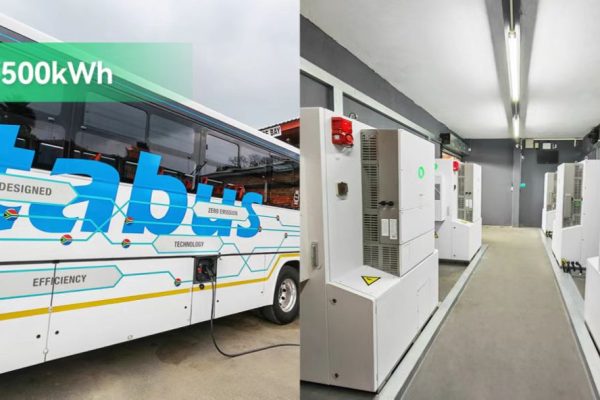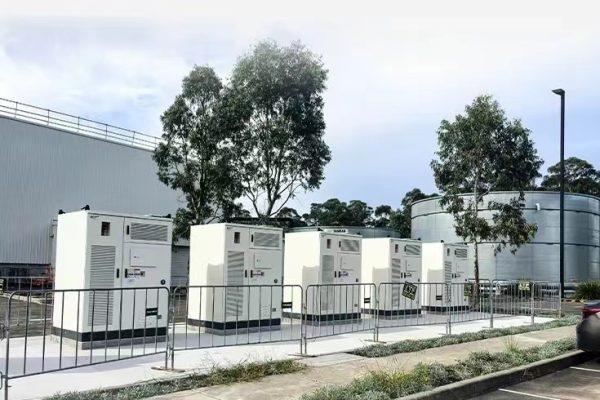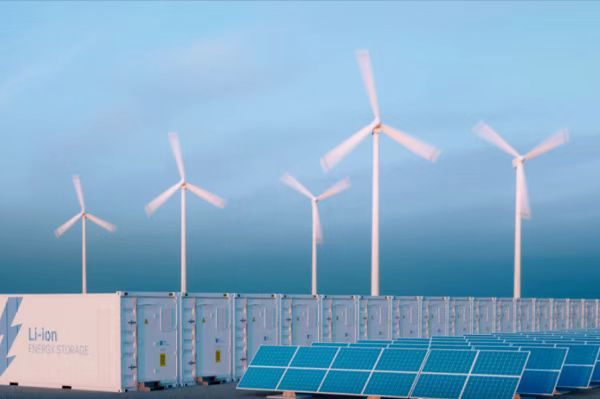When exporting solar inverters, lithium batteries, or hybrid ESS cabinets, shipping can easily become the most confusing part of the process — especially for small or mixed orders.
While bulk container shipments follow standard logistics patterns, small energy equipment orders (1–5 pallets or a few sets of products) require careful freight planning to avoid delays, damage, or excessive costs.
This article explains the main freight options, how to choose the right method for your shipment size, and what buyers should know when importing small quantities of energy equipment.
1. The Challenge of Shipping Small Energy Equipment
Energy products like batteries and inverters have special conditions:
- Heavy and fragile (metal enclosures, internal electronics)
- Dangerous goods (DG) classification for lithium batteries
- Export documentation requires compliance with UN38.3, MSDS, and sometimes IEC certification
These factors make choosing the right freight mode critical — it’s not just about price, but safety, customs clearance, and delivery reliability.
2. Main Freight Options Overview
| Freight Method | Typical Use | Transit Time | Cost Level | Notes |
|---|---|---|---|---|
| Express (DHL / FedEx / UPS) | Small parcels (<100 kg) | 3–7 days | $$$ | Easiest customs, fast, but costly |
| Air Freight (Airport to Airport) | 100–500 kg shipments | 5–10 days | $$ | Requires consignee to handle customs |
| Sea Freight (LCL – Less than Container Load) | 1–10 m³ | 25–40 days | $ | Cost-effective, longer time |
| Sea Freight (FCL – Full Container Load) | >10 m³ | 25–40 days | $ | Best rate per unit, stable transport |
| Rail Freight (to Europe) | 300–3000 kg | 20–30 days | $$ | Fast and cost-efficient for EU routes |
| Courier by Freight Forwarder | Mixed or sample shipments | 7–12 days | $$ | Flexible, handles lithium batteries better |
⚙️ For small ESS or inverter orders, the most common choices are air freight and LCL sea freight.
3. Express Courier: Best for Samples or Urgent Deliveries
If you’re shipping 1–2 inverters, sample batteries, or accessories, express courier is usually the most convenient.
✅ Advantages
- Door-to-door delivery (no customs broker needed)
- Fastest transit (3–7 days)
- Easy online tracking
⚠️ Limitations
- High cost (volumetric weight applies)
- Not all couriers accept DG lithium batteries — must confirm in advance
- Package size limit (typically <70 kg per box)
🔋 For lithium-based products, always ask your supplier if they have DG-approved packaging and courier account authorization.
4. Air Freight: Ideal for Small Bulk Shipments
Air freight works well for 100–500 kg shipments — such as 5–10 inverters or small battery systems.
✅ Advantages
- Faster than sea (about 7–10 days door-to-door)
- Reliable schedule
- Better handling than sea freight
⚠️ Considerations
- Requires DG-certified battery packaging
- Buyer or forwarder must handle customs at destination
- Cost calculated by chargeable weight (volume × density)
✈️ Use this for urgent projects or new distributors needing quick delivery of demo stock.
5. LCL Sea Freight: Best Balance for Regular Small Orders
LCL (Less than Container Load) consolidates multiple buyers’ cargo into one container.
It’s cost-effective for 1–10 cubic meters of cargo — e.g., several ESS cabinets or palletized inverters.
✅ Advantages
- Low cost per unit
- Accepts heavy cargo
- Works with DG cargo (if forwarder is qualified)
⚠️ Limitations
- Longer transit (25–40 days)
- More handling (risk of minor scratches or delays)
- Shared container may cause slight schedule uncertainty
🚢 When ordering small ESS systems monthly, LCL gives the best long-term shipping economy.
6. FCL (Full Container Load): For Consolidated Batches
Once your order volume reaches 10 m³ or more, consider booking a 20-foot or 40-foot container directly.
✅ Benefits
- Lowest cost per unit
- Less handling → safer for fragile products
- Full control over loading and unloading
⚠️ Challenges
- Higher upfront freight cost
- Requires warehouse or forklift at destination
- Customs declaration complexity
📦 Suppliers can assist with “mixed loading” — inverters, batteries, and cables safely packed in one FCL shipment.
7. Rail Freight: Smart Choice for EU Buyers
China–Europe rail freight is growing popular for mid-sized ESS and inverter orders.
✅ Advantages
- 20–30 days transit time (faster than sea)
- Lower cost than air
- More stable for inland European destinations
⚠️ Notes
- Limited routes (e.g., to Germany, Poland, France)
- Requires DG approval for batteries
- Seasonal availability can vary
🚄 For distributors in Central or Eastern Europe, rail freight provides an excellent speed–cost balance.
8. Courier via Freight Forwarder
Some logistics agents specialize in battery and inverter shipments and use mixed transport (air + ground).
These “courier by forwarder” options are excellent for 5–10 small packages, often cheaper than DHL but still fast.
✅ Advantages
- Handles DG lithium cargo smoothly
- Customs clearance service included
- 7–12 days average door-to-door
⚡ Many ESS exporters rely on these forwarders for small repeat shipments.
9. Packaging and Documentation Requirements
For lithium and ESS products, correct documentation ensures customs clearance without delay.
| Document | Purpose |
|---|---|
| Commercial Invoice & Packing List | Standard for customs |
| MSDS (Material Safety Data Sheet) | Required for lithium products |
| UN38.3 Test Report | Proof of safe transport compliance |
| DG Declaration | Dangerous goods shipping declaration |
| Battery Handling Label | Required for all lithium shipments |
📄 Ask your supplier to prepare all documents before cargo pickup — missing paperwork causes most shipping delays.
10. Cost Comparison Example
| Route | Volume | Transit | Estimated Cost (USD) |
|---|---|---|---|
| DHL Express | 0.3 m³ / 80 kg | 5 days | $400–600 |
| Air Freight | 1.2 m³ / 300 kg | 8 days | $500–800 |
| LCL Sea Freight | 3 m³ / 600 kg | 30 days | $200–300 |
| FCL (20ft) | 28 m³ / 7 tons | 35 days | $1,000–1,300 |
💰 The “sweet spot” for balancing cost and speed is usually around 1–3 m³ — small enough for LCL, big enough to avoid courier pricing.
11. Tips for Buyers
- Ask your supplier for volume and weight before booking freight.
It helps forwarders quote accurately. - Choose forwarders experienced with DG cargo.
General forwarders may refuse battery shipments. - Book shipping 5–7 days in advance.
Especially important during peak seasons (Oct–Jan). - Request photos before packing.
Confirms protective wrapping and pallet condition. - Consider “Ex-Works + forwarder pickup” for flexible control if you have your own agent.
12. Recommended Strategy by Order Type
| Order Type | Best Freight Option | Why |
|---|---|---|
| 1–2 inverter samples | Express Courier | Fast and simple |
| 5–10 inverters / 1 battery set | Air Freight / Courier by forwarder | Mid-cost, quick |
| 2–5 ESS cabinets | LCL Sea Freight | Cost-effective and safe |
| Regular distributor batch | FCL | Stable cost and handling |
| Europe shipments | Rail Freight | Speed–cost balance |
13. Future Logistics Trends for ESS Products
As energy storage trade grows, logistics networks are adapting:
- More DG-certified couriers accepting LFP batteries
- Simplified UN38.3 digital documentation
- Regional warehouses in EU and Africa to shorten lead times
- “Green shipping” options using low-emission vessels
🌍 Efficient freight planning is part of building a professional supply chain image for ESS exporters.
For small energy equipment orders, freight is not one-size-fits-all.
The best choice depends on your shipment’s size, urgency, and safety requirements.
✅ Quick guide:
- Use Express for samples.
- Choose Air Freight for urgent small batches.
- Go LCL for steady low-cost supply.
- Upgrade to FCL when orders grow.
- For EU, Rail Freight is the new middle ground.
Smart logistics planning ensures your solar and storage products reach customers safely, on time, and with optimized cost — a key part of professional energy export operations.









